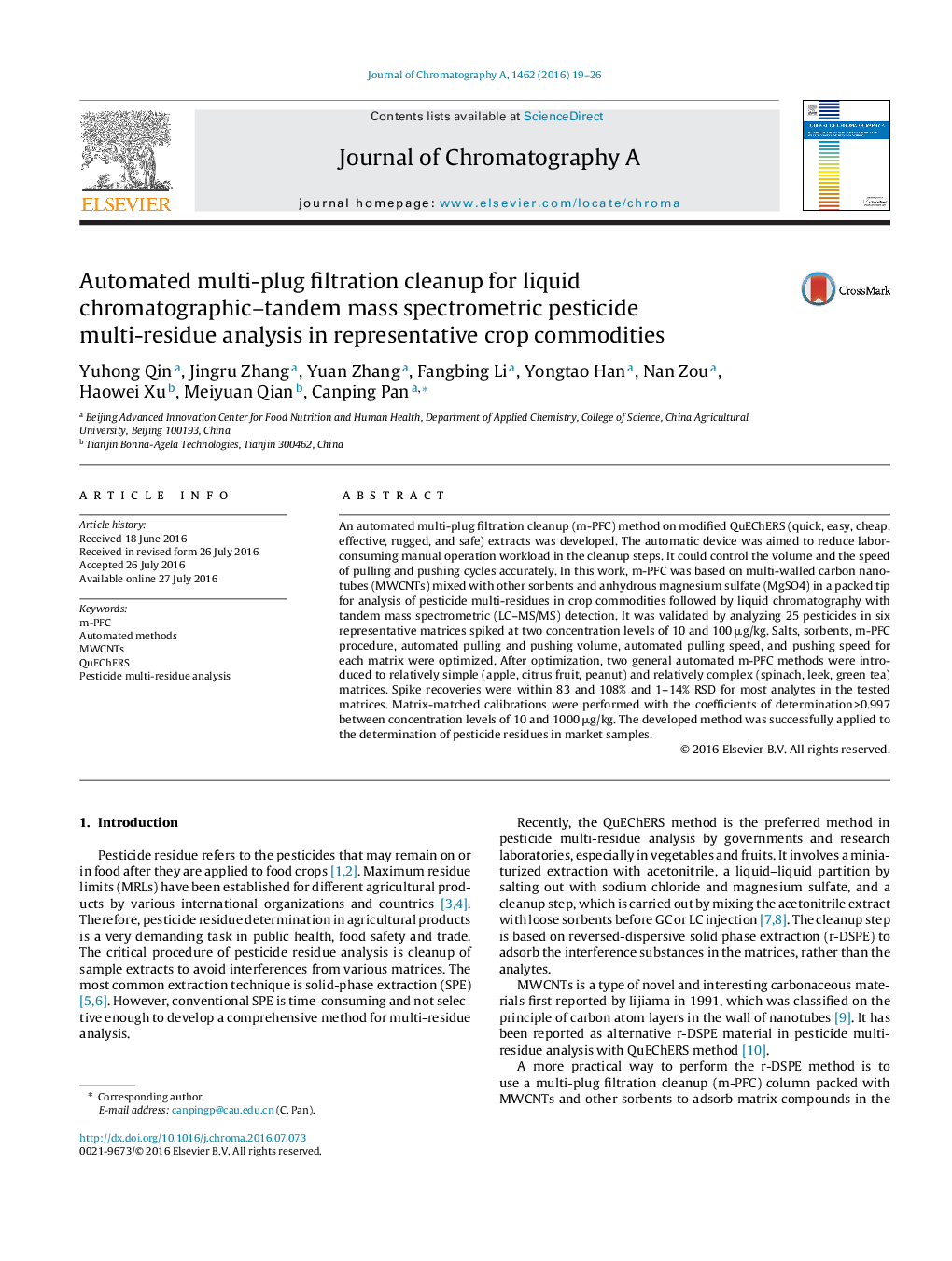| Article ID | Journal | Published Year | Pages | File Type |
|---|---|---|---|---|
| 1198615 | Journal of Chromatography A | 2016 | 8 Pages |
•Automated m-PFC method for pesticide multi-residue analysis was developed.•Salts, sorbents, m-PFC procedure, automated volume and speed were optimized.•General methods for common and complex matrices were developed.•The suggested methods were expected to be applied to other commodities.
An automated multi-plug filtration cleanup (m-PFC) method on modified QuEChERS (quick, easy, cheap, effective, rugged, and safe) extracts was developed. The automatic device was aimed to reduce labor-consuming manual operation workload in the cleanup steps. It could control the volume and the speed of pulling and pushing cycles accurately. In this work, m-PFC was based on multi-walled carbon nanotubes (MWCNTs) mixed with other sorbents and anhydrous magnesium sulfate (MgSO4) in a packed tip for analysis of pesticide multi-residues in crop commodities followed by liquid chromatography with tandem mass spectrometric (LC–MS/MS) detection. It was validated by analyzing 25 pesticides in six representative matrices spiked at two concentration levels of 10 and 100 μg/kg. Salts, sorbents, m-PFC procedure, automated pulling and pushing volume, automated pulling speed, and pushing speed for each matrix were optimized. After optimization, two general automated m-PFC methods were introduced to relatively simple (apple, citrus fruit, peanut) and relatively complex (spinach, leek, green tea) matrices. Spike recoveries were within 83 and 108% and 1–14% RSD for most analytes in the tested matrices. Matrix-matched calibrations were performed with the coefficients of determination >0.997 between concentration levels of 10 and 1000 μg/kg. The developed method was successfully applied to the determination of pesticide residues in market samples.
